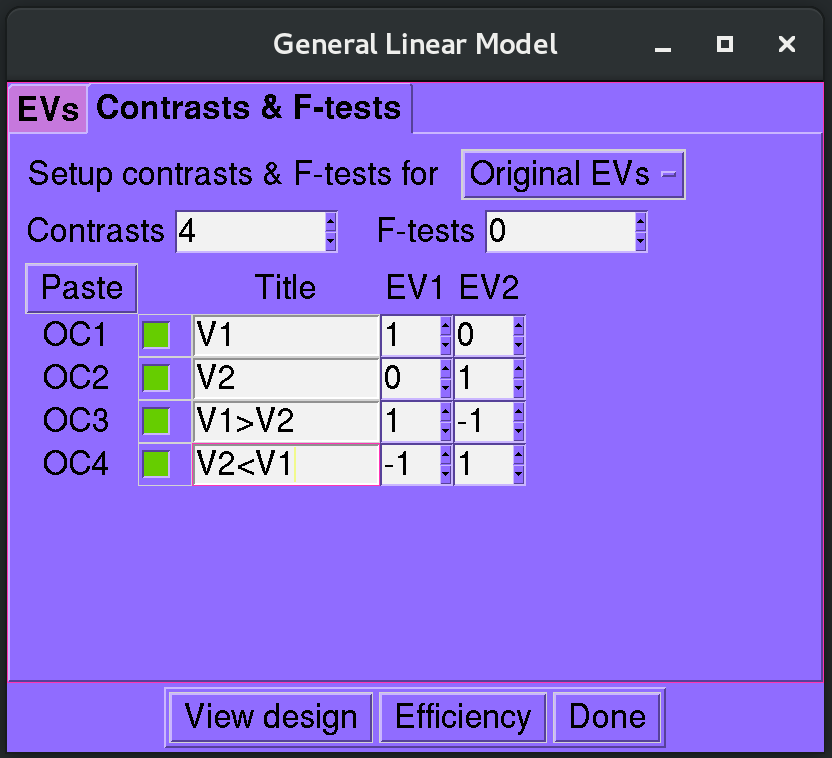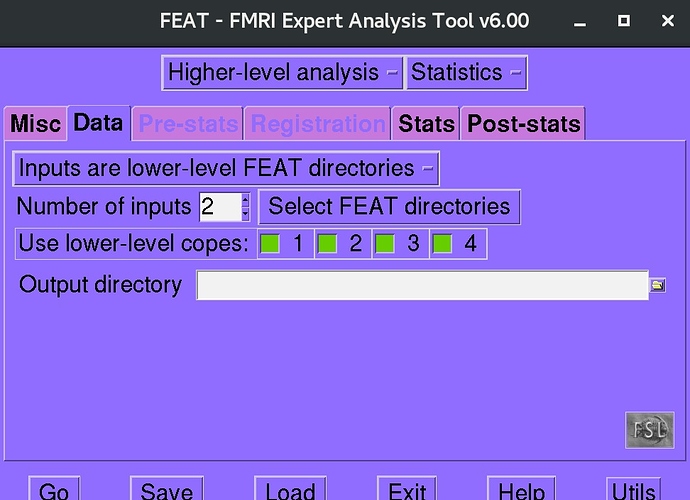Dear Experts,
I am having trouble designing 2nd level analysis for the data that was collected in 2 consequent fMRI runs with 4 active tasks performed in (30 sec.) blocks separated by (30 sec.) blocks of rest condition (rs).
The 1st run contained 2 alternating visual tasks (V1 and V2) separated by the rest condition (rs):
run1 = [rs,V1,rs,V2,rs,V1,rs,V2,rs,V1,rs,V2,rs,V1,rs,V2,rs]
The 2nd run contained 2 alternating auditory tasks (A1 and A2) separated by the rest condition (rs):
run2 = [rs,A1,rs,A2,rs,A1,rs,A2,rs,A1,rs,A2,rs,A1,rs,A2,rs]
I have successfully managed to perform 1st level analysis using FEAT (FSL) on the FMRIPREP output as per suggestions in Performing full glm analysis with fsl on the bold images preprocessed by fmriprep without re-registering the data to the MNI space.
The following contrasts were defined for the visual runs at the 1st level (and the analogue was defined for the auditory runs).
OC1 = [ 'V1' 1 0 ]
OC2 = [ 'V2' 0 1 ]
OC3 = [ 'V1<V2', 1 -1 ]
OC4 = [ 'V2<V1', -1 1 ]
Now having a number (for simplicity say 10, but the actual number is 44) of 1st level feat directories I want to perform the 2nd level analysis which should reveal differences between the tasks.
I have consulted various tutorials and user guides from FSL web-page, but unfortunately the examples provided usually assume that the consequent runs are identical (each subject performs the same tasks in every run).
This implies that 2nd level is only there to get the within-subject (fixed-effects) average of the runs, not the difference between the tasks.
This is typically followed by the 3rd-level analysis providing group-level interference estimation.
So I can’t wrap my head around the design matrix for contrasts like:
V1<A1
A1<V1
V2<A2
A2<V2
A1<V2
V2<A1
A2<V1
V1<A2
How would one design EVs and contrasts to get the above on the 2nd level?
If anybody can direct me to any guide/tutorial/manual or supply a screenshots of the FEAT GLM setup (EVs and Contrasts & F-tests tabs) for similr situation I would be very grateful.
Bonus question: Is the 2nd and 3rd level really necessary or can the above be obtained from the 1st level data in one go?
This should be relatively easy for contrasts like:
V1
V2
A1
A2
V1<V2
V2<V1
A1<A2
A2<A1
as those are already calculated at the 1st level…

